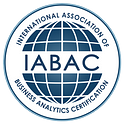Introduction to Data Science
In today’s data-driven world, Data Science stands as a cornerstone of technological advancement and decision-making across industries. It integrates concepts from mathematics, statistics, computer science, and domain expertise to extract meaningful insights from data. This multidisciplinary approach empowers organizations to make informed decisions, optimize processes, and innovate.
Fundamentals of Data Science
The journey into Data Science begins with a solid foundation in key areas:
- Mathematics and Statistics: Data scientists rely heavily on mathematical concepts such as probability theory, linear algebra, and calculus. These form the backbone for understanding statistical models, making inferences, and designing algorithms.
- Programming: Proficiency in programming languages such as Python, R, and SQL is essential. Python, with libraries like Pandas and NumPy, facilitates data manipulation and analysis. R is favored for statistical computing and visualizations, while SQL is crucial for managing relational databases.
- Domain Knowledge: Understanding the nuances of specific industries (e.g., healthcare, finance) enhances the relevance and impact of data-driven insights. It enables data scientists to pose relevant questions, interpret results, and drive actionable outcomes.
Data Science Tools and Technologies
Data scientists leverage a diverse array of tools and technologies throughout the data lifecycle:
- Data Wrangling: Tools like Pandas and Dplyr streamline data cleaning, transformation, and aggregation tasks. They ensure data quality and consistency before analysis.
- Visualization: Tools such as Matplotlib, Seaborn, and ggplot2 enable the creation of visualizations that communicate insights effectively. Visual representations, such as histograms, scatter plots, and heat maps, help identify trends, outliers, and patterns within data.
- Machine Learning: Frameworks like Scikit-Learn, TensorFlow, and PyTorch support the implementation of machine learning algorithms. These algorithms enable predictive modeling, classification, clustering, and anomaly detection tasks.
Data Collection and Preprocessing
Effective data analysis hinges on meticulous data collection and preprocessing:
- Data Sources: Data can originate from structured sources (e.g., databases) or unstructured sources (e.g., social media, sensor data). Ensuring data completeness and accuracy is crucial for meaningful analysis.
- Data Cleaning: Techniques such as handling missing values, addressing outliers, and standardizing formats ensure data integrity and reliability.
- Data Integration: Integrating data from disparate sources into a cohesive dataset enhances the scope and depth of analysis. Techniques like data merging and joining consolidate information for comprehensive insights.
Exploratory Data Analysis (EDA)
EDA serves as a preliminary step to analyze and summarize data characteristics:
- Descriptive Statistics: Metrics such as mean, median, standard deviation, and variance provide insights into data distribution and central tendencies.
- Data Visualization: Visual representations like box plots, histograms, and scatter plots reveal relationships, distributions, and anomalies within data. Interactive tools like Tableau and Power BI enhance exploratory analysis by enabling dynamic exploration and visualization of data patterns.
- Hypothesis Testing: Statistical tests validate assumptions and hypotheses derived from data observations. Techniques like t-tests and ANOVA assess the significance of findings and support data-driven decision-making.
Statistical Analysis and Machine Learning
Data scientists apply statistical methods and machine learning algorithms to derive actionable insights:
- Regression Analysis: Linear regression, logistic regression, and polynomial regression models predict numerical outcomes and classify data points based on historical trends and patterns.
- Classification: Algorithms such as Support Vector Machines (SVM), decision trees, and random forests categorize data points into predefined classes. Classification models underpin applications in spam filtering, image recognition, and sentiment analysis.
- Clustering: Unsupervised learning algorithms like K-means clustering and hierarchical clustering identify inherent patterns and group similar data points together. Clustering techniques aid in customer segmentation, anomaly detection, and market basket analysis.
Advanced Topics in Data Science
Advanced studies encompass specialized areas and cutting-edge technologies:
- Natural Language Processing (NLP): NLP techniques enable machines to understand, interpret, and generate human language. Applications range from sentiment analysis in social media to chatbot development and language translation.
- Deep Learning: Neural networks, convolutional neural networks (CNNs), and recurrent neural networks (RNNs) form the foundation of deep learning. These models excel in complex pattern recognition tasks, such as image and speech recognition, and have revolutionized fields like healthcare diagnostics and autonomous driving.
- Big Data Analytics: Managing and analyzing vast volumes of data necessitates scalable solutions. Technologies like Apache Hadoop and Spark facilitate distributed computing and parallel processing, enabling efficient data storage, retrieval, and analysis at scale.
Data Science Certification and Career Path
Certification programs and career pathways solidify expertise and open doors to diverse opportunities:
- Certification Programs: Recognized certifications from platforms like Coursera, and edX, and industry leaders such as IBM and Microsoft validate proficiency in specific data science skills and technologies.
- Career Opportunities: Data scientists are in high demand across industries, including finance, healthcare, e-commerce, and telecommunications. Roles span from data analysts and machine learning engineers to data science managers and AI researchers.
- Professional Development: Continuous learning and staying abreast of emerging technologies, such as edge computing and blockchain, are crucial for career advancement and maintaining relevance in the competitive landscape.
the syllabus for data science encompasses a comprehensive curriculum designed to equip aspiring data scientists with the requisite skills and knowledge to harness the power of data. From foundational principles in mathematics and programming to advanced techniques in machine learning and big data analytics, the syllabus prepares individuals to tackle real-world challenges and drive innovation across industries. Certification programs and career pathways offer structured routes for professional development, ensuring that data scientists remain at the forefront of technological advancements and data-driven decision-making.
